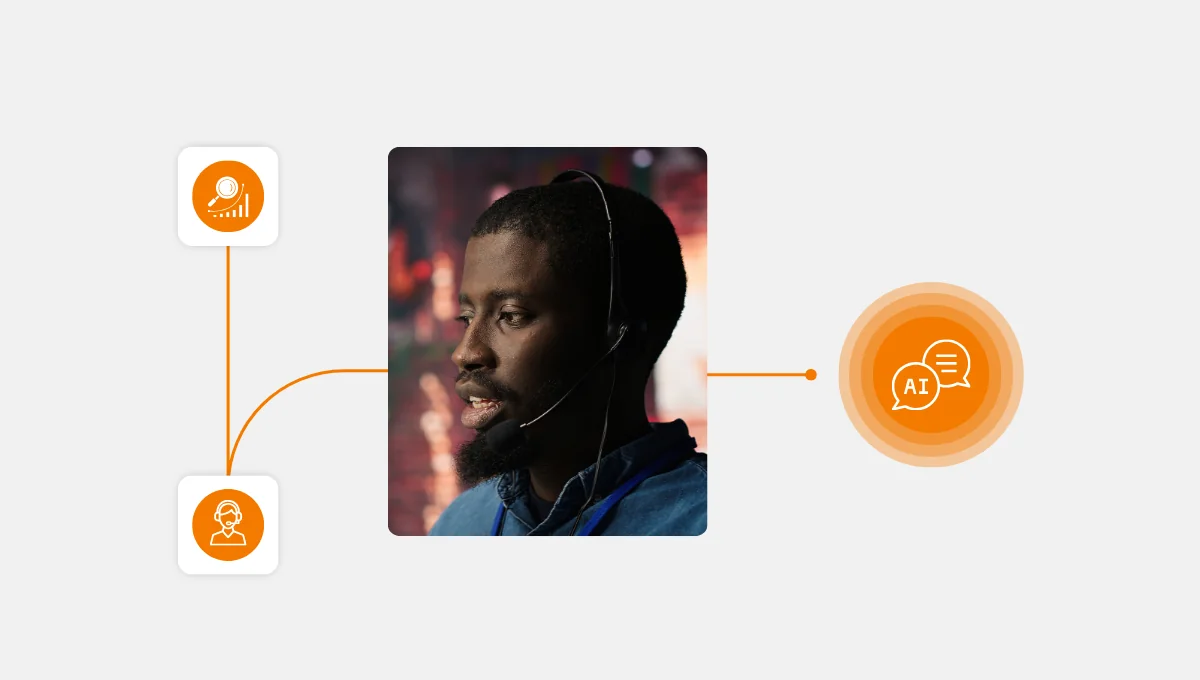“The best way to predict the future is to invent it.”
— Alan Kay
That’s what smart companies are doing — inventing the future of service by integrating intelligent systems that learn, adapt, and evolve with every customer interaction.
AI technologies like chatbots and sentiment analysis are core tools for delivering
- Fast,
- Personal, and
- Intelligent customer service
that increases satisfaction and loyalty while cutting operational costs.
The Rise of AI in Customer Support
AI chatbots understand intent, adapt tone, and tailor solutions based on customer behavior, history, and even mood.
Chatbots are getting smarter, faster — and allows more personalized customer support.
The businesses using AI and chatbots in customer support have measurable benefits like:
- Reduce customer service costs by up to 30%, IBM.
- First contact resolution improved by 20–40%, McKinsey.
Gartner predicts 75% of customer service interactions will be handled by AI by 2026, up from just 25% in 2018.
That’s not a gimmick — that’s structural transformation.
If you haven’t used any AI in your customer support, AI Chatbots are the best place to start. You can request your first AI Chatbot demo here

The Sentiment Engine: AI’s Empathy Circuit
Sentiment analysis…well, here’s where things get interesting.
In simple terms, sentiment analysis is the use of NLP and machine learning to detect emotional tones in customer messages. This isn’t about reading keywords. It’s about understanding emotion — frustration, urgency, confusion — and reacting accordingly.
For instance, when a customer writes, “I’ve had enough. Nothing works.” AI sentiment detection flags this as a high-risk interaction, bumping it to the front of the queue or alerting a human rep.
During a live call, AI can also assist agents by displaying real-time sentiment feedback. If the customer’s tone shifts from neutral to angry, the system can prompt the agent to change their approach — for example, by offering to adjust their tone, or looping in a supervisor when necessary.
And it pays off:
- Sentiment-aware systems boost customer satisfaction by up to 25%.
- Companies using real-time emotion analytics see churn drop by 15%

Customer Support Trends and AI Tools
The sci-fi writers weren’t wrong. AI has arrived — not as an overlord or savior, but as a quiet force for faster, smarter, and more personalized customer support. That is why companies use AI-driven customer experience tools both for prediction and personalization.
The Predictive Support: In Minority Report, police prevent crimes before they happen. In today’s contact centers, AI is preventing churn before customers complain.
For example, a company sees that a user:
- has been inactive for days,
- hasn’t updated their billing, and
- recently asked about cancellation policies.
The AI flags this user as a churn risk and prompts proactive outreach:
“Hi, just checking in — looks like you had some trouble with your plan. Can we help?
For instance, BMW uses AI to analyze driving behavior and service history to send proactive personalized maintenance alerts, offer upgrades, or suggest new models tailored to individual preferences.
This is predictive analytics in action — turning data into anticipation.
The Personalization Touch: In Ex Machina, Ava learns to mimic human interaction through observation. AI personalized customer support systems do the same. They adjust their tone and suggestions based on user history, behavior, and preferences.
If a customer is technical, the bot provides detailed API references. If the user is new, it explains things in plain English. This kind of adaptation drives better outcomes — and makes the customer feel understood.
Let’s give a few examples how what personalization looks like;
In the fashion industry, brands like Levi’s use AI to analyze:
- browsing history,
- purchase data, and even
- social media behavior to tailor product recommendations.
Levi’s shoppers receive a personalized email offering jeans in their preferred fit and color, based on previous purchases and style preferences.
In the supermarket sector, chains like Kroger leverage AI to track customer purchase habits through loyalty programs.
They use this data to send digital coupons and product suggestions tailored to individual buying patterns — like offering a discount on oat milk to a frequent plant-based shopper.
You may think: “Yes, these cases are so cool, but if I want to build an AI-driven customer experience strategy from scratch, where should my company start?”
Here are some tangible tools and solutions we offer that you can use to build AI-driven customer support easily:
- AI-based Chatbots
- Conversational IVR (Interactive Voice Responses)
- CX Insights
- Real-time Accent Neutralization
- Operation Interaction Analyzer
- AI-Powered Transcription and more
Loyalty by Logic: AI’s Impact on CX Metrics
Companies that invest in AI-driven customer experiences are inventing more than tools. They’re reinventing relationships — at speed, with precision. And not surprisingly they got some awesome results.
According to a 2023 PwC report:
- 73% of consumers say customer experience(CX) is a key factor in purchase decisions, second only to price and product.
- 86% are willing to pay more for a better experience.
AI supports that better experience at scale:
- Reduces average handling time by up to 50%
- Improved customer retention by 20% over 12 months (case study)
As you see, the question isn’t whether to use AI. It’s how to use it wisely — not just to automate, but to personalize. Not just to scale, but to build trust.
By blending machine logic with emotional intelligence, one thing becomes clear: in customer support, the future is already on the line.
If you also want to know what’s going on between your company and customers, you need to have the necessary AI tools and customer experience software.
Call Center Studio provides all the tools and solutions you need. Let’s work together.




